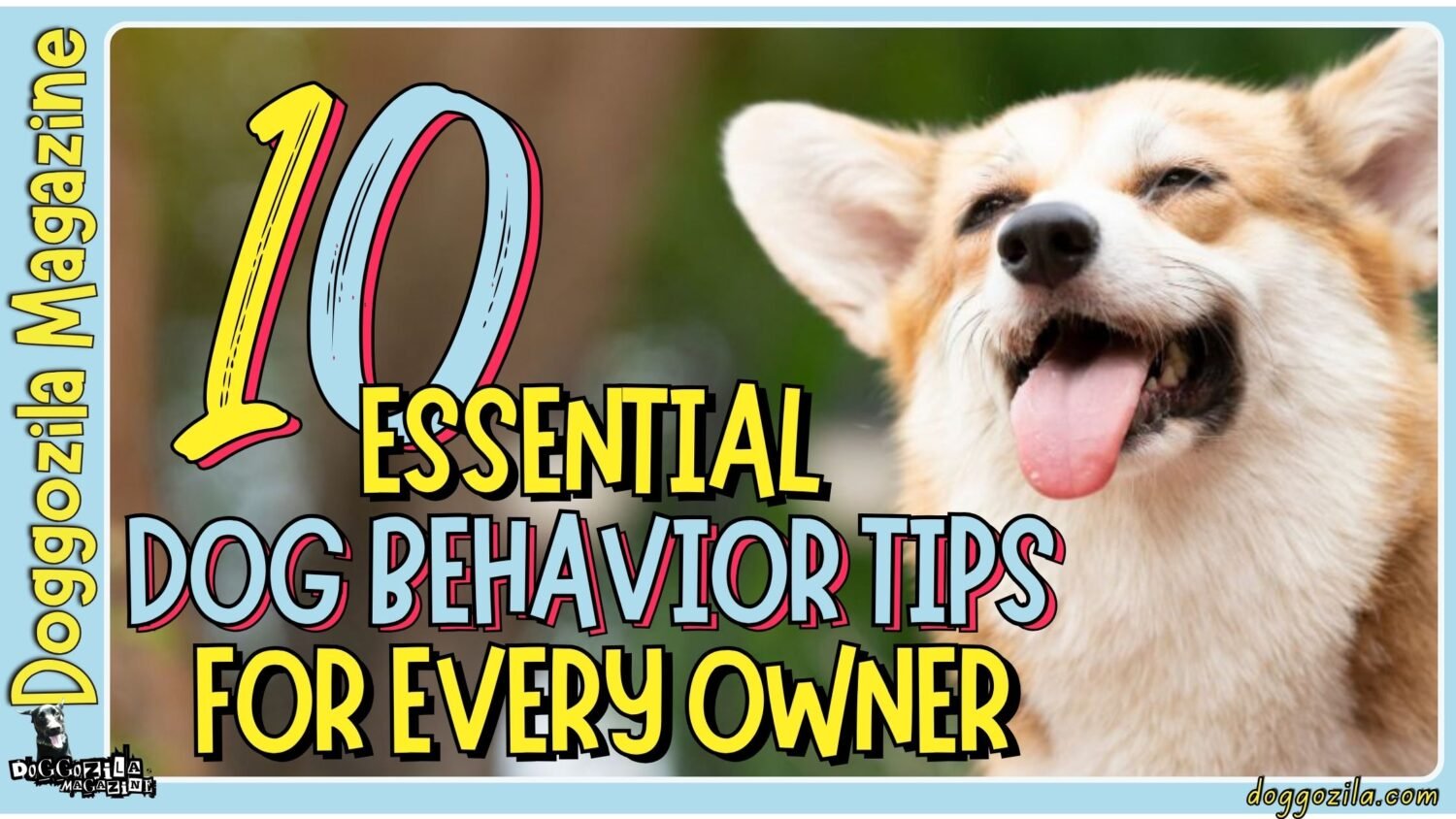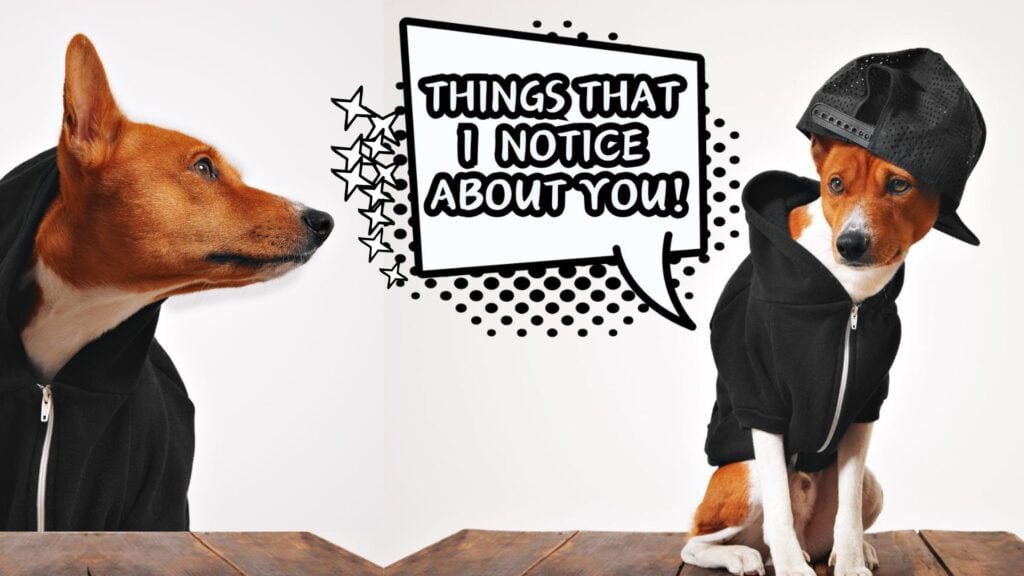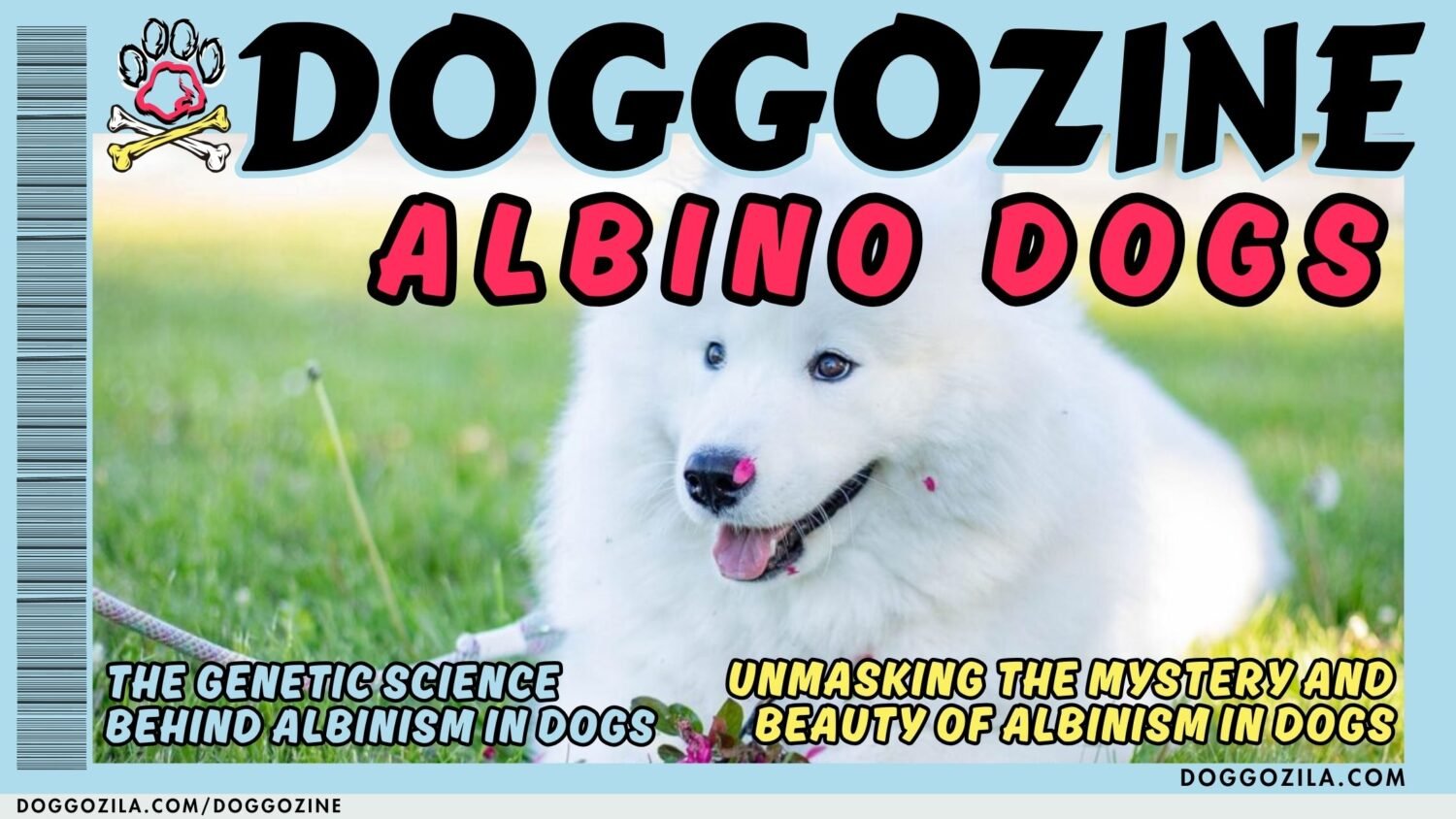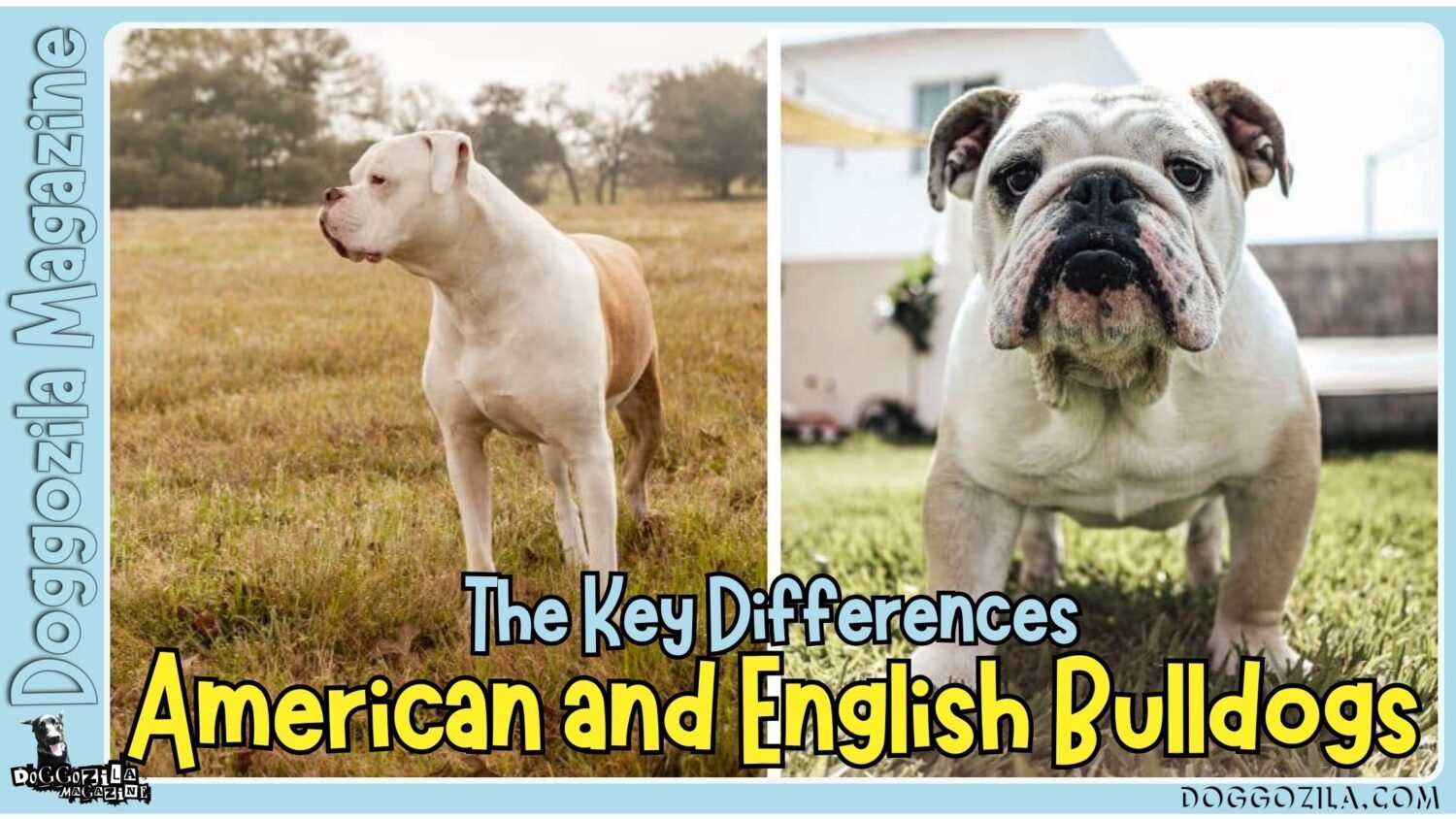Understanding how to teach your dog to trade is one of the most valuable skills you can add to your training toolkit. It’s not just about getting a toy back without a chase, but it’s about building trust, preventing resource guarding, and turning potential conflicts into moments of cooperation. By using positive reinforcement, patience, and a little creativity, you can help your dog see that giving something up often leads to something even better.
Whether it’s a favorite ball, a found stick, or a tempting sock, trading can strengthen your bond and make daily life smoother for both of you. Teaching your dog to trade toys or other objects taps into their natural curiosity and desire for interaction, turning a simple swap into a fun learning adventure. By blending principles of positive reinforcement and clear communication, you can guide your dog through each step of the exchange process.

THE SCIENCE BEHIND TEACHING DOGS TO TRADE ACTIONS
When you break down the trade command into tiny, manageable stages, you’re applying the same behavioral psychology that pioneers like Dr. Karen Pryor used in marine mammal training. Dogs learn object exchange the way they learn any other skill through quick, consistent reinforcement and repetition.
University of Bristol researchers found that dogs exposed to short, frequent training sessions master new cues twice as fast as those with fewer, longer sessions. Incorporating clicker timing into these mini-sessions gives your dog a precise marker to know exactly when they’ve succeeded.
Research Show That To Teach Your Dog How To Trade Precision Is Crucial
The precision is crucial whether you’re training a service dog to swap a dropped item for medication or a rescue pup to give up a toy gently. Over time, your dog links the action of dropping one toy with the promise of another, building both excitement and clarity. The result is a reliable, joyful trade behavior you can generalize to walks, home routines, or advanced sports.
Science shows that dogs respond best when they understand exactly what is expected, and that applies whether you’re crate training a puppy or introducing a seasoned adult to a new trick. Embarking on this journey strengthens your bond and builds confidence, setting the stage for every other trade-based activity you’ll explore later.
How to Teach Your Dog to Trade: Laying the Groundwork
Before you ever ask for an exchange, your dog needs to trust that giving up one object means they’ll get something even better. Start by offering two identical toys, your dog holds Toy A, you present Toy B, then reward an exchange immediately with a treat or enthusiastic praise.
After a handful of successes, swap in a more coveted item like a favored squeaky bone or tug rope to ramp up motivation. Throughout these early trials, keep sessions under five minutes so your dog stays eager and focused, a tactic supported by modern positive dog training techniques.
Consistency in cue word, gesture, and timing helps your dog predict what comes next, reducing confusion. If your pup hesitates, step back to the identical-to-identical toy exchange before progressing, ensuring frustration never outweighs fun. By methodically building this foundation, you create a reliable baseline from which all other trade behaviors grow.
How to Choose the Right Toys for Trading Exercises?
Not every toy is suitable for object exchange, selecting items with distinct textures, sizes, and reward value is key to keeping your dog engaged. Soft plush toys may work well for puppies exploring gentle mouthing, while sturdy rubber chews can hold up to enthusiastic adult jaws.
Incorporating a variety of shapes like balls, rings and ropes, teaches your dog to generalize the trade command across different objects, mirroring the way agility enthusiasts mix obstacles to sharpen their dog’s focus. Always rotate toys frequently to prevent boredom, a strategy many professional trainers use to keep sessions fresh and entertaining.
If you notice your dog guarding a particular object, refer to your veterinary behaviorist or local dog behavior classes before introducing it in trade drills. This safeguards against resource guarding and builds confidence for more advanced cues. By thoughtfully curating your toy arsenal, you set the stage for seamless transitions from toy trade to everyday item exchange.
Why Learning To Trade Matters For Every Dog Owner?
Learning how to teach your dog to trade is one of the most valuable skills you can develop as a pet parent. It’s not just about getting a toy back without a chase, it’s about building trust, preventing resource guarding, and creating a calmer, safer home. When your dog understands that giving something up leads to something better, you avoid tug‑of‑war battles and reduce stress for both of you.
When introducing how to teach your dog to trade, start with low‑value items and gradually work toward higher‑value possessions. This prevents your dog from feeling threatened or defensive. Offer a reward that’s slightly more appealing than the item they have, and always use a calm, friendly tone. Positive reinforcement is key, reward the moment they release the object. Over time, your dog will associate trading with good things, making it a habit they enjoy. This approach also helps reduce anxiety and builds a foundation for more advanced training later.
How To Teach Your Dog To Trade Using Positive Reinforcement?
Positive reinforcement is the foundation of how to teach your dog to trade successfully. The idea is simple, reward the behavior you want to see. When your dog willingly releases an item, immediately offer a high‑value treat or favorite toy. Timing is crucial, the reward must come the instant they let go. This method not only teaches trading but also builds trust and reduces the risk of guarding behavior.
Over time, your dog will begin to see trading as a game they want to play. Once your dog understands the basics of trading, start applying it in everyday situations. If they pick up a sock or stick, calmly ask for a trade and offer something better.
This prevents chasing and turns potential conflicts into training opportunities. The more you integrate trading into daily routines, the more natural it becomes for your dog. Eventually, they may even bring you items voluntarily, hoping for a reward.
🔑 Key Points: Break the trade command into tiny, manageable stages and use short, frequent training sessions with a clicker for precise marking to help your dog learn quickly and reliably.

HOW TO TEACH YOUR DOG TO TRADE: SETTING UP THE RIGHT ENVIRONMENT
When you teach your dog how to trade it’s important to create a training environment that fosters success as important as the actual cues you teach, so clear a quiet space free of high-value distractions. A well-structured environment makes the difference between a smooth training session and a frustrated pup who’s eager to chase that bouncing ball instead of exchanging it.
Begin in a low-traffic room with just a few toys and treats visible to your dog, giving them maximum focus on the trade task. As proficiency grows, gradually introduce mild distractions like another family member passing by or a distant doorbell sound, so your dog learns to maintain engagement amid real-world stimuli.
How to Teach Your Dog to Trade: Creating a Safe Training Space
Your dog’s sense of security directly influences their willingness to trade, so selecting a familiar spot like a corner of the living room or a quiet hallway can make early sessions feel calming rather than confusing. Remove potential triggers such as squeaky toys that might set off bark bursts or chewable household items that could tempt unwanted chewing behaviors.
Many puppy training classes emphasize consistency in training location, and research supports that spatial cues help dogs form strong mental associations with commands. Make sure your dog’s mat or bed is nearby, so they have a clear “home base” to return to between exchanges, minimizing stress.
A simple barrier like a baby gate can define the training zone without isolating your dog completely. Keep water accessible and take brief breaks, maintaining a pace that underscores enjoyment over drill-like repetition. This carefully designed environment elevates trade training from an impromptu game to a structured teaching tool that blends both indoor and outdoor contexts.
Leveraging Natural Rewards in the Trade Command
Dogs are motivated by what feels instinctive like playing tug, chewing textures, or exploring scents, so lean into these natural rewards when reinforcing trade behaviors. Instead of only relying on kibble or generic treats, incorporate favorite chew sticks or short tug sessions immediately after a successful exchange.
This mix of play and treat-based reinforcement mirrors the “variable reward” approach used in advanced obedience classes and can sustain motivation longer than a constant flow of identical snacks. By tying the trade cue to high-emotion rewards like a quick romp or praise-filled scratch behind the ears, you deepen your dog’s connection to the command.
Visit a local off-leash park or fenced yard for a lively payoff once your dog masters indoor exchanges, reinforcing that trade leads to freedom and fun. Over time, natural rewards help your dog perform the behavior even when the original treats aren’t available, a milestone many trainers aspire to. This balance of structured play and real-world reinforcement turns your living room drill into an adventure your dog looks forward to each day.
How to Teach Your Dog to Trade: Minimize Distractions During Initial Sessions
Once your dog understands the basics, it’s time to teach your dog how to trade in more distracting settings. This ensures the skill is reliable anywhere. When your puppy or adult dog first encounters the trade command, every rustle, footstep, or squeak can derail their attention, so begin in a neutral zone with minimal stimulus. Close windows to muffle outside noises like passing cars or barking neighbors, and keep other pets in a separate room if possible.
Experts in canine cognition agree that dogs learn fastest when they can focus on one cue at a time, so resist the urge to combine trade with new commands like “sit” or “down” until the exchange is well established. If your dog glances away mid-attempt, calmly guide their focus back to the toys without chiding, employing a cheerful tone to reaffirm that the trade exercise remains a positive experience.
Gradually reintroduce mild distractions such as family members quietly moving about to help your dog generalize the cue. As your dog learns to tune out these background events, you’ll notice faster, more confident exchanges in busier settings. This stepwise approach, embraced by professional behaviorists, paves the way for flawless trade performance even in the most stimulating environments.
🔑 Key Points: Begin training in a quiet, low-traffic room free from high-value distractions to give your dog the best chance to focus and succeed on the trade task.

BUILDING CONFIDENCE: HOW TO TEACH YOUR DOG TO TRADE ITEMS SAFELY?
Safety and confidence go hand in hand when teaching your dog any new skill, and the trade command is no exception, knowing they won’t lose out on a reward helps them engage fully. By structuring each session so your dog always feels successful, stepping back if they hesitate, you prevent frustration and guard against potential resource guarding behavior in dogs.
Consistent positive feedback, whether through treats, toys, or verbal praise, reinforces the notion that trading yields a clear benefit. As your dog’s confidence grows, you can begin introducing higher-value items and more complex exchanges without risking stress or tension.
How to Teach Your Dog to Trade: Starting with High-Value Items
Introducing a coveted toy or a specially reserved chew as the second item in a trade signals to your dog that effort equals premium reward, driving engagement. Allow your dog to interact freely with the initial item to build investment, then gently present the high-value object while marking the correct drop with your clicker or “yes” marker word.
Timing is critical, if you delay the marker, your dog may drop the object too late or not at all, confusing the association between action and reward. Many trainers reference a case study from Guide Dogs for the Blind, where service pups learned object exchange for daily tasks by first swapping a favorite ball before advancing to keys or medication boxes.
Always follow a successful swap immediately with play or treat to solidify the link between giving up and gaining something better. If your dog shows reluctance, reduce the perceived risk by starting with slightly less desirable items before graduating back to the high-value ones. This graduated approach ensures your dog’s confidence builds steadily, making each trade session both safe and rewarding.
Gradual Progression Techniques to Avoid Frustration
Frustration can set in quickly if your dog isn’t ready for the next level, so plan a clear progression path that increases challenge in small, logical steps. Begin with identical toys and short distances, your dog trades right at your side then slowly move to longer distances and varied objects, incorporating brief waits before marking successes.
A research project at the University of Pennsylvania’s Canine Cognition Center found that dogs trained with micro-chains of simple behaviors mastered complex tasks nearly twice as fast as those trained with whole-task methods. Incorporating short, frequent breaks maintains enthusiasm and prevents mental overload, especially in puppies under six months old.
If your dog repeatedly hesitates, revisit an earlier stage with guaranteed success before advancing again. Celebrate small wins lavishly to keep the training environment upbeat, and track progress in a journal or an app to identify patterns and adjust your approach. This methodical layering protects against setbacks and ensures each milestone feels accessible and fun.
Why Monitoring The Dog Body Language for Stress Signals is Important?
Your dog communicates via subtle shifts like lip licking, yawning, or turning their head away, so honing your observational skills can prevent training sessions from tipping into stress. A dog that suddenly stops engaging or freezes mid-trade may be signaling confusion or discomfort, prompting you to simplify the exercise or return to a known cue.
Positive trainers recommend keeping sessions under 10 minutes and watching for any changes in ear position, tail carriage, or panting rate, all markers of your dog’s emotional state. When you notice signs of stress, take a soothing break, offer a favorite chew, or shift to a comforting routine like a gentle belly rub before resuming.
Recognizing and respecting these signals not only safeguards your dog emotionally but also strengthens your partnership, because they learn that you are attentive to their needs. Over time, this empathetic approach fosters resilience, turning what could be a high-stakes drill into a consistently enjoyable bonding activity.
🔑 Key Points: Structure each session so your dog always feels successful, using consistent positive feedback to reinforce that trading yields a clear benefit and builds their confidence.

HOW TO TEACH YOUR DOG TO TRADE WITH CLICKER AND POSITIVE REINFORCEMENT?
Blending clicker training with a reward-based mindset transforms the trade command into an efficient, science-backed practice that dogs learn quickly. The clicker serves as an instantaneous marker, pinpointing the exact moment of success, while treats, toys, and praise cement the behavior.
By combining these tools, you tap into your dog’s natural drive to please and problem-solve, setting a foundation that can carry over to advanced cues in obedience and agility. This dual approach is at the heart of modern dog training, making each trade session feel like a game rather than a chore.
Understanding Clicker Training Fundamentals
Clicker training hinges on the principle of “mark and reward,” where the click pinpoints precise behaviors and the subsequent reward reinforces them. Before introducing the trade exercise, you’ll want to charge the clicker, click and immediately give a treat repeatedly until your dog expects that a click always predicts a snack.
This simple routine can often be completed in under five minutes and lays the groundwork for more intricate tasks. Dogs are remarkably adept at associating the click with positive outcomes, a fact supported by numerous behavior studies and widely used in trick training communities.
Once your dog reliably responds to the click, you can introduce object exchange, using the click to mark the exact instant they release the first toy. The clarity of this marker accelerates learning and reduces the need for verbal repetition, making sessions more efficient and fun.
As your dog masters each stage, you can fade the treat gradually, relying more on praise and toy rewards to maintain enthusiasm without overfeeding. Mastery of clicker fundamentals paves the way for seamless integration of the trade command into everyday outings and advanced canine sports.
How to Teach Your Dog to Trade Using Clicker Timing Effectively?
Precise timing is everything, you must click at the split-second your dog’s jaw loosens around the first toy, not when it’s fully out of their mouth or when they’ve already reached for the next object. If you click too early, your dog may think the cue applies to a half-drop action; too late and they might misunderstand which behavior earned the reward.
Many positivity-focused trainers recommend practicing your click timing with independent drills, watch a video of your dog dropping objects, pause frame by frame, and click when you would have rewarded. This drill sharpens your reflexes and ensures that real-time training sessions are on point.
As you move into live trading, lean on short bursts: ask for one exchange at a time, click precisely, then treat, rather than chaining multiple trades in rapid succession. Over time, your dog tunes into this pattern, dropping on cue even in the absence of obvious treats because they anticipate a positive outcome.
Clear, consistent click timing accelerates progress, often reducing the number of sessions needed for your dog to master the trade command. This precision also minimizes frustration for both of you, transforming each exchange into a clear, predictable step forward.
Combining Verbal Cues with Hand Signals
Coupling a clear verbal marker like “trade” with an accompanying hand signal amplifies your dog’s understanding by engaging both auditory and visual channels. Hand signals can be as simple as a palm-up gesture toward the new toy or a pointing motion that your dog learns to follow.
Studies in animal cognition demonstrate that dogs excel at reading human gestures, often outperforming even young children in tasks involving pointing cues. After your dog responds reliably to the click and treat, begin introducing the hand signal just before you present the second object, synchronizing it with your “trade” command.
Gradually fade the clicker, using treats intermittently, until your dog exchanges on verbal cue and signal alone. This multimodal approach proves invaluable when your dog is working in environments where the clicker might be muffled or when background noise competes with your voice. By reinforcing the combined cues, you create a robust, flexible behavior that stands firm across any setting.
Related Article Recommendation: How to Train Your Dog to High Five? A Fun Trick!
How To Teach Your Dog To Trade: Integrating Treats Without Causing Overfeeding
Balancing calorie intake with adequate rewards can be tricky, especially if you’re conducting multiple short sessions each day to reinforce the trade command. One solution is to carve treats into smaller pieces, using just a fraction for each click, and supplement with low-calorie options like steamed green beans or air-popped popcorn.
Another approach is to count your training treats as part of your dog’s daily meal allowance, if you give ten small bits during trade practice, reduce the evening kibble portion accordingly. You can also use part of your dog’s regular kibble during these drills, reserving premium treats like freeze-dried liver for milestone achievements.
Incorporating a toy-based reward, such as a one-minute tug session in lieu of a treat, adds variety and keeps sessions engaging. Many trainers advocate for a balanced mix of food, play, and praise to prevent dogs from losing interest or packing on pounds. This mindful diet-and-training plan ensures your pup stays healthy, motivated, and eager to swap toys time and again.
🔑 Key Points: Use a clicker to mark the exact moment your dog releases an object and immediately follow it with a reward, which accelerates learning and makes sessions efficient.

HOW TO TEACH YOUR DOG TO TRADE: TROUBLESHOOTING COMMON PITFALLS
Even with the best preparation, you may encounter hiccups like dogs who balk at releasing items, sudden resource guarding, or confusion when you switch objects. Identifying the exact cause, whether it’s lack of motivation, fear of losing their prize, or simply miscommunication allows you to adapt your plan swiftly.
Revisiting earlier, simpler stages often resolves most issues, restoring your dog’s trust and enthusiasm. With patience and a flexible strategy, you can iron out these wrinkles and return to smooth, confident exchanges.
Recognizing Resistance and Overcoming Hesitation
When your dog freezes or backs away from the trade exercise, it’s a clear signal that something about the process feels unsafe or unclear to them. Rather than pushing forward, take a step back to the last stage your dog performed without issue, perhaps using identical toys or trading at a closer distance.
Reintroduce the high-value object as a separate game of fetch, then gently resume the exchange sequence once confidence returns. Often, just a few successive successes at an easier level rebuilds trust and banishes hesitation. Avoid scolding or expressing frustration, as negative feedback can exacerbate guarding behaviors.
Instead, sprinkle in surprise rewards like a long-held favorite treat, once your dog re-engages, reinforcing the notion that trading leads to great outcomes. By adjusting on the fly and honoring your dog’s pace, you transform a stuck moment into a constructive, confidence-boosting session.
How to Teach Your Dog to Trade: Addressing Resource Guarding
Resource guarding can emerge when dogs worry they’ll never see a prized item again, making them reluctant to let go during trade drills. To counter this, begin with a “give” command using a low-value object, rewarding every release with a high-value treat dropped into their bowl.
Gradually phase in the trade command by showing the second toy much earlier, teaching your dog that every release yields an even better outcome. Incorporate exercises recommended by certified behaviorists, such as dropping treats into a bowl immediately after each release, to build positive associations.
If your dog snaps or stiffens, pause all work with guarded items and seek guidance from a qualified trainer before proceeding. With consistent, gentle desensitization, most dogs learn that they can relinquish guarded objects safely and expect tangible rewards in return. This structured approach not only solves guarding issues but deepens your dog’s overall trust and cooperation.
When to Seek Professional Assistance
If your dog’s resistance escalates to lunging, snapping, or obsessive guarding, professional intervention ensures safety for both of you and preserves your dog’s emotional well-being. Certified Applied Animal Behaviorists and ACC–certified trainers have specialized techniques to address complex guarding behaviors and underlying anxiety.
Early consultation can prevent minor hiccups from solidifying into entrenched habits, saving time and stress in the long run. A professional can also help tailor the trade protocol to dogs working as service animals, therapy companions, or participants in dog sports.
Whether it’s an in-person behavior consultation or remote coaching, expert guidance provides clarity and confidence, helping you resume training with a clear roadmap. Don’t hesitate to reach out if sessions plateau or behaviors worsen as your dog’s happiness and safety come first.
🔑 Key Points: If your dog hesitates or shows guarding behavior, immediately step back to an easier, known stage of training to rebuild their trust and avoid frustration.

ADVANCED STRATEGIES FOR OBJECT EXCHANGE
Once your dog masters basic toy swapping on cue, you can elevate the trade command into more sophisticated exchanges that blend obedience with practical life skills. Advanced strategies include teaching your dog to exchange household items like handing over the TV remote or swapping a muddy toy for a fresh one during a rainy-day play session.
You can also integrate the trade command into agility training, using object exchange at the end of a weave or tunnel as a fun, reward-based finish. These extensions not only sharpen your dog’s mental agility but showcase how versatile the trade behavior can become in everyday life.
How to Teach Your Dog to Trade: Generalizing Across Locations
A dog that only trades in your living room isn’t fully trained, so practice the cue in multiple settings, from the backyard to the front porch and local dog-friendly park. Each new location brings fresh distraction like grass smells, distant noises, or other dogs passing by forcing your dog to rely on the learned cue rather than environmental cues.
Start with short sessions in each location, reinforcing success with praised-for performances and familiar toys. Over time, your dog learns that “trade” means the same thing no matter where they are, a crucial step before introducing the command on busy walks or in training classes.
This method echoes successful approaches used in group dog training camps, where dogs quickly adapt to varied environments through systematic repetition. By interleaving different locations, you prevent context-specific learning and foster a truly robust exchange behavior.
Linking Trade Command to Leash Polite Behavior
Combining the trade command with polite leash manners turns walking into a dynamic training opportunity. If your dog picks up a leaf, stick, or discarded bottle on a walk, use the trade cue to swap it for a treat or their favorite kibble piece, reinforcing polite leash manners while clearing unwanted items.
This approach not only keeps your dog safe from swallowing hazards but also transforms walks into enriching mental workouts. Research on loose-leash training confirms that integrating obedience cues into everyday outings enhances overall focus and reduces pulling.
By seamlessly weaving trade into your stroll routine, your dog learns that cooperation on the leash has immediate, tangible benefits. Over time, this consistent practice makes polite leash walking and object exchange second nature, elevating your everyday routines into engaging training sessions.
Enhancing Complexity with Multiple Objects
After mastering single-item swaps, introduce multiple objects, Toys A, B, and C, asking your dog to trade A for B, then B for C, before returning to A. This chaining of exchanges challenges your dog’s working memory and boost problem-solving skills, much like memory tasks researchers use in canine cognition studies.
Start with two objects and short sequences, then gradually add more items and longer waits before marking each success. This advanced drill not only keeps your dog mentally sharp but also showcases their ability to adaptively switch focus under a structured cue sequence.
Many trick-training aficionados use these multi-object games in performance routines, demonstrating what’s possible with a well-trained canine partner. As you push boundaries, always celebrate each completed chain with high-value rewards and play breaks to maintain enthusiasm and prevent fatigue.
🔑 Key Points: Generalize the command by practicing in various locations and introduce multiple objects to challenge your dog’s memory and integrate the skill into practical tasks.

REAL-LIFE CASE STUDIES IN DOG TRADE TRAINING
Examining how other trainers and researchers have approached object exchange can spark fresh ideas and validate your methods. From service dogs trained to swap medication boxes with therapists, to agility competitors who incorporate toy trades into their courses, real-world case studies reveal the adaptability of the trade command.
A small pilot study at Colorado State University even explored using trades to manage separation anxiety in dogs by exchanging a favored stuffed toy for a soothing lavender-scented plush. These stories demonstrate that trade training isn’t just a party trick, but it’s a valuable communication tool that enhances your dog’s autonomy and reliability across a spectrum of roles.
Case Study: Service Dogs Trading for Comfort Items
At Guide Dogs for the Blind, trainers taught service dogs to exchange a dropped item for a specially scented comfort cloth, reducing owner anxiety during stressful moments. The protocol began with simple toy trades in a low-distraction kennel, gradually moving to real-world exchanges during therapy visits.
By the end of training, dogs reliably swapped personal items like prescription glasses or remote controls, demonstrating both flawless trade behavior and calming presence. This case exemplifies how the trade command can bridge the gap between everyday assistance and deep emotional support, enriching the lives of both dog and handler.
Related Article Recommendation: Service Dogs Training: Guide Into The Process
How to Teach Your Dog to Trade: Lessons from Agility Training
Agility competitors often reward course completion with a toy trade at the finish line, linking high-adrenaline exercise to cooperative exchange. Trainers at national championships relay that pairing the trade cue with the rush of finishing a weave pole sequence enhances both speed and focus.
Dogs learn that accurate negotiation of jumps and tunnels leads directly to a satisfying swap, reinforcing precision under pressure. Incorporating timed trade stations into your backyard course can simulate competition conditions, boosting your dog’s readiness for formal trials. By adopting these agility-inspired strategies, you sharpen your dog’s responsiveness while keeping sessions adventurous and varied.
Insights from a Small-Scale University Research Project
A canine cognition lab at the University of Vienna conducted a pilot study on object exchange, finding that dogs exposed to voluntary trade tasks showed lower stress levels in new environments. Participants who learned to swap toys before novel experiences like vet visits or car rides, displayed fewer avoidance behaviors and recovered more quickly from induced anxiety.
The research underscores the trade command’s potential as a confidence-building tool, extending beyond play into real-world coping strategies. Integrating brief trade drills before challenging outings can thus serve as both a mental warm-up and a stress management technique. This academic insight highlights that trade training is more than entertainment, it’s a bridge to emotional resilience and deeper canine-human understanding.
🔑 Key Points: Build trust by starting with two identical toys, rewarding any exchange immediately, and keeping sessions under five minutes to ensure your dog stays eager and focused.

TAKING IT FURTHER: FROM TRADING TOYS TO PRACTICAL TASKS
With a solid foundation in place, you can repurpose the trade command for countless practical applications, from fetching the morning newspaper to exchanging a muddy toy for a towel before indoor play. By teaching your dog to trade everyday objects on cue, you create a versatile skill set that enhances both convenience and cooperation.
This next-level approach turns the trade command into a true partnership tool, demonstrating your dog’s capacity to assist in daily routines and specialized roles. The possibilities are limited only by your imagination and your dog’s enthusiasm for exchanging fun items.
How to Teach Your Dog to Trade: Everyday Household Objects
Transitioning from toy exchanges to household items like handing you the TV remote or exchanging your phone for their chew toy expands the command’s practicality. Begin by teaching your dog to hold lightweight, nonbreakable objects, then gradually introduce more varied items under close supervision. Always reward each successful trade with a favorite treat or play session to reinforce the behavior.
Over weeks of practice, your dog learns that any item they drop on cue will be replaced with something they value, whether it’s a biscuit, belly rub, or the joy of freedom in the yard. This practice not only entertains your dog but also streamlines daily chores, making your four-legged friend a more integrated and helpful household member.
Creating Enrichment Games with the Trade Command
By embedding trade drills into puzzle feeders or hide-and-seek enrichment games, you amplify your dog’s mental stimulation while reinforcing the exchange behavior. For example, teach your dog to collect puzzle pieces scattered around the yard and trade each one for a treat, turning cleanup into an engaging scavenger hunt.
Dog behaviorists often recommend such enrichment strategies to combat boredom, reduce curb-toothed chewing, and satisfy your dog’s innate foraging instincts. Rotating the game’s rules, varying objects, locations, and reward types, this keeps sessions unpredictable and exciting. This layered enrichment not only cements the trade command but also elevates your dog’s overall cognitive fitness and well-being.
Transforming Trade Skills into Community Dog Sports
Several dog sports clubs now host “Object Exchange Relay” events that combine the trade command with teamwork, speed, and accuracy. Dogs and handlers race through a short course, swapping designated items at each station before racing to the next checkpoint. These relay competitions celebrate communication, precision, and cooperative spirit, making them a natural extension for dogs skilled in trading.
Participating in such community events introduces socialization opportunities and fosters a sense of camaraderie among trainers and their dogs. Whether you compete at a local fun match or demonstrate the trade command at a community fair, your dog’s polished exchange routine is bound to impress, and inspire others to explore this enriching skill.
Teaching your dog to trade is an investment in communication, trust, and creativity that pays dividends far beyond the exchange itself. By blending foundational science, real-world case studies, and advanced enrichment games, you transform a simple toy swap into a dynamic partnership tool.
Keep sessions short, varied, and upbeat, always tuning into your dog’s emotional cues to guide the pace. As you and your canine companion master each stage from plush toys to practical household items, you’ll discover a world of collaborative adventures waiting just beyond the next exchange.
🔑 Key Points: Select a variety of toys with distinct textures and values to keep your dog engaged, and always rotate them frequently to prevent boredom during training sessions.

FAQ: HOW TO TEACH YOUR DOG TO TRADE?
The easiest way to start to teach your dog how to trade is by using a low‑value item and offering a high‑value reward in exchange. Begin in a quiet environment with minimal distractions so your dog can focus. Hold out the reward, give your trade cue (such as “trade” or “swap”), and wait for your dog to release the item. The moment they do, reward immediately. This positive reinforcement builds trust and helps your dog understand that giving something up leads to something better. Over time, you can progress to higher‑value items and more distracting environments.
While both involve your dog releasing an item, to teach your dog how to trade focuses on exchanging the item for something else, whereas “drop it” simply means letting go. Trading is often more effective for preventing resource guarding because your dog learns they’re not losing out, but they’re gaining something of equal or greater value. “Drop it” can be useful in emergencies, but trading builds a more cooperative mindset. Many trainers recommend teaching both so you have flexibility in different situations.
Yes, to teach your dog how to trade is one of the most effective ways to reduce or prevent resource guarding. By consistently pairing the act of giving something up with a positive outcome, you change your dog’s emotional response from defensive to cooperative. Start with items your dog doesn’t guard and gradually work up to higher‑value possessions. Always use calm body language and avoid grabbing the item. Over time, your dog will associate your approach with good things, not loss.
High‑value rewards are key to teach your dog how to trade successfully. These can include small pieces of cooked chicken, cheese, freeze‑dried liver, or a favorite squeaky toy. The reward should be more appealing than the item your dog currently has. For some dogs, a quick game of tug or fetch is more motivating than food. Experiment to find what excites your dog most, and reserve those rewards exclusively for trading practice to keep them special.
The time it takes to master how to teach your dog to trade depends on your dog’s age, temperament, and training history. Some dogs pick it up in a few short sessions, while others may take several weeks. Consistency, patience, and using the right rewards will speed up the process. Practicing in short, frequent sessions is more effective than long, infrequent ones. Remember, the goal is not just speed but building a reliable, positive habit.
Yes, but it’s best to master how to teach your dog to trade in a quiet space first. Once your dog is consistent, gradually introduce distractions, start in the backyard, then move to a quiet park, and eventually to busier areas. Always use high‑value rewards in challenging settings to keep your dog’s focus. If they struggle, step back to an easier environment and build up again. This gradual approach ensures success without overwhelming your dog.
Absolutely, learning to teach your dog how to trade is ideal for puppies because it sets the foundation for good manners and trust. Puppies are naturally curious and often pick up things they shouldn’t. Teaching them to trade early prevents bad habits like running away with stolen items. Use soft treats and gentle handling, and keep sessions short to match their attention span. Early training also helps prevent resource guarding later in life.
If your dog runs away, avoid chasing them, it can turn into a game of keep‑away. Instead, make the trade offer irresistible by using a high‑value reward and calling them in a cheerful tone. Practicing recall alongside teaching your dog how to trade can help. You can also start in a smaller, enclosed space to limit escape options. Over time, your dog will learn that coming to you for a trade is more rewarding than running off.
Yes, but it’s best to teach each dog individually before practicing together. Once both understand how to teach your dog to trade, you can introduce joint sessions under close supervision. Use separate rewards and ensure each dog gets their own turn. This prevents competition and keeps the training fair. With patience, you can teach both dogs to trade calmly, even in the same space.
To maintain the skill, teach your dog how to trade into daily routines. Swap a toy before dinner, trade a stick during a walk, or exchange a ball during playtime. Vary the rewards to keep your dog interested. Regular practice ensures the behavior stays sharp and reliable. Most importantly, always make trading a positive experience so your dog continues to enjoy it.









